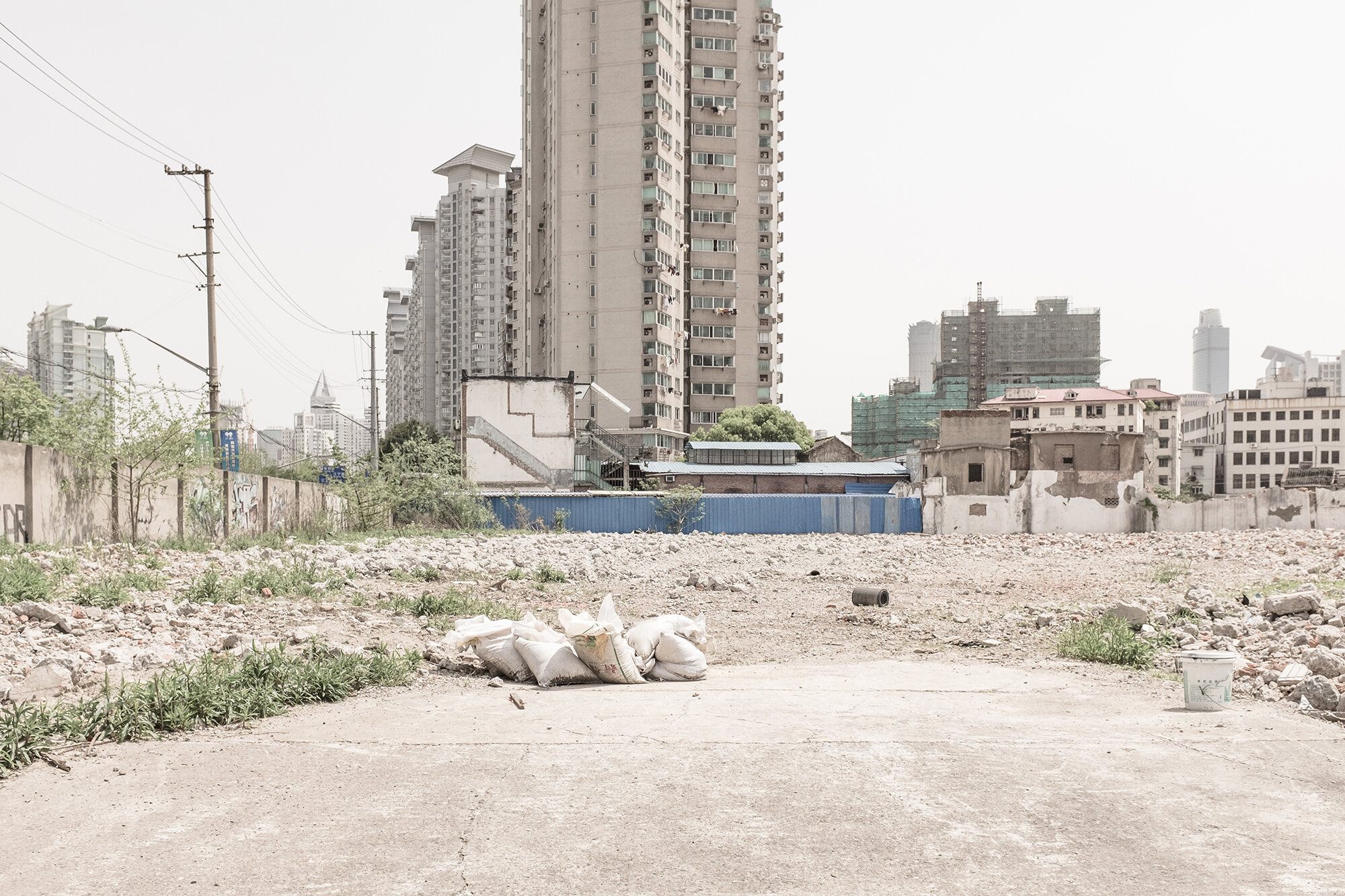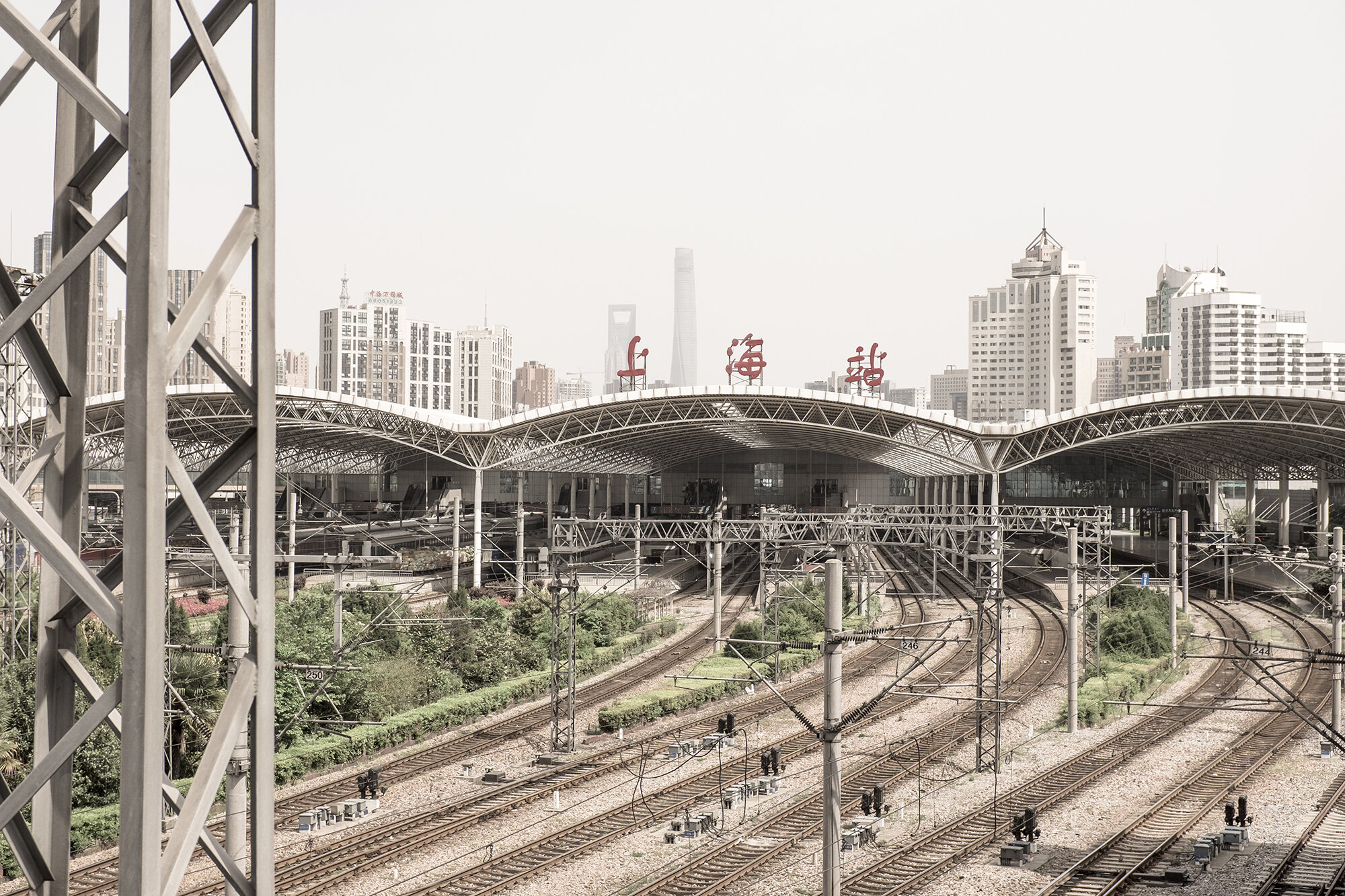Dust Never Sleeps presents a vision of Shanghai as a state of mind, both oneiric and limitless in its stillness. A place emptied of its habitual crowds, inhabited instead by composite geometry and neat lines outlining space and volume... always unexpected. The urban matter is looked at from afar, creating a detachment of vision and an enhanced loneliness. Urban expansion is focused on what is to become, on the transformation it’s suffering without any regard whatsoever to beauty. A diffused white invades every layer of the images, mixing the monochromatic sky with the plaster dust from the omnipresent construction sites. Demolition and reconstruction; man occasionally present, framed in this estranged dimension as an exception - sometimes slightly ironical - to the emptiness and rigorous architecture.
A journey, proving clear-minded and oneiric at the same time, through the stillness of an apparently endless urban space, always different yet similar to itself everywhere, in its consistent search for a design within that geometry – lines, shapes, surfaces and volumes – that is key to the representation and interpretation of the world. A Shanghai whose landscape disorder is exalted from the point of view of its uncontrolled growth, but fixed permanently in its being and becoming, and recomposed in subsequent frames in which the presence of man is occasionally slightly ironic, witness to a relentlessly shifting present.
The formal consistency of the enhanced white in all images combines the milky haze of an Asian sky and of a colorless architecture with the impalpability of a perennial construction site’s chalk dust, suspended in the air or else deposited on the very urban matter. An ubiquitous white making the landscape uniform while investigating it from a certain distance, incorporating and defining the whole urban scene. The distance created by the framing quotes the same photographer’s detachment belonging to the New Topographics’ School, neither pursuing nor reproducing absolute beauty. A will of reading and telling, instead, on the threshold between personal vision and objective narration of reality.
The crowd is totally absent in an environment where it would be primary, in a solitude that is human isolation within the huge dimension of places. A solitude engulfing but recomposed in a tangible though estranging reality: paying a tribute to an Italian Master of photography, it may be said to be the quest of Ghirri’s “impossibile image”, of an “image showing the static character of painting on the one hand, and the dynamic quality of cinema on the other”, owing also to “a presence of the photograph and an absence of man”. Not answers, thus, but questions about reality, untiring investigation aiming at the construction of a unitary whole, sum of looks at single urban corners symbolizing that very whole: the city. Not an Ideal City, as in Piero Della Francesca, but a city proving to be real even in its oneiric dimension.
Claudia Ioan and Massimiliano Tuveri, Officine Creative Italiane











